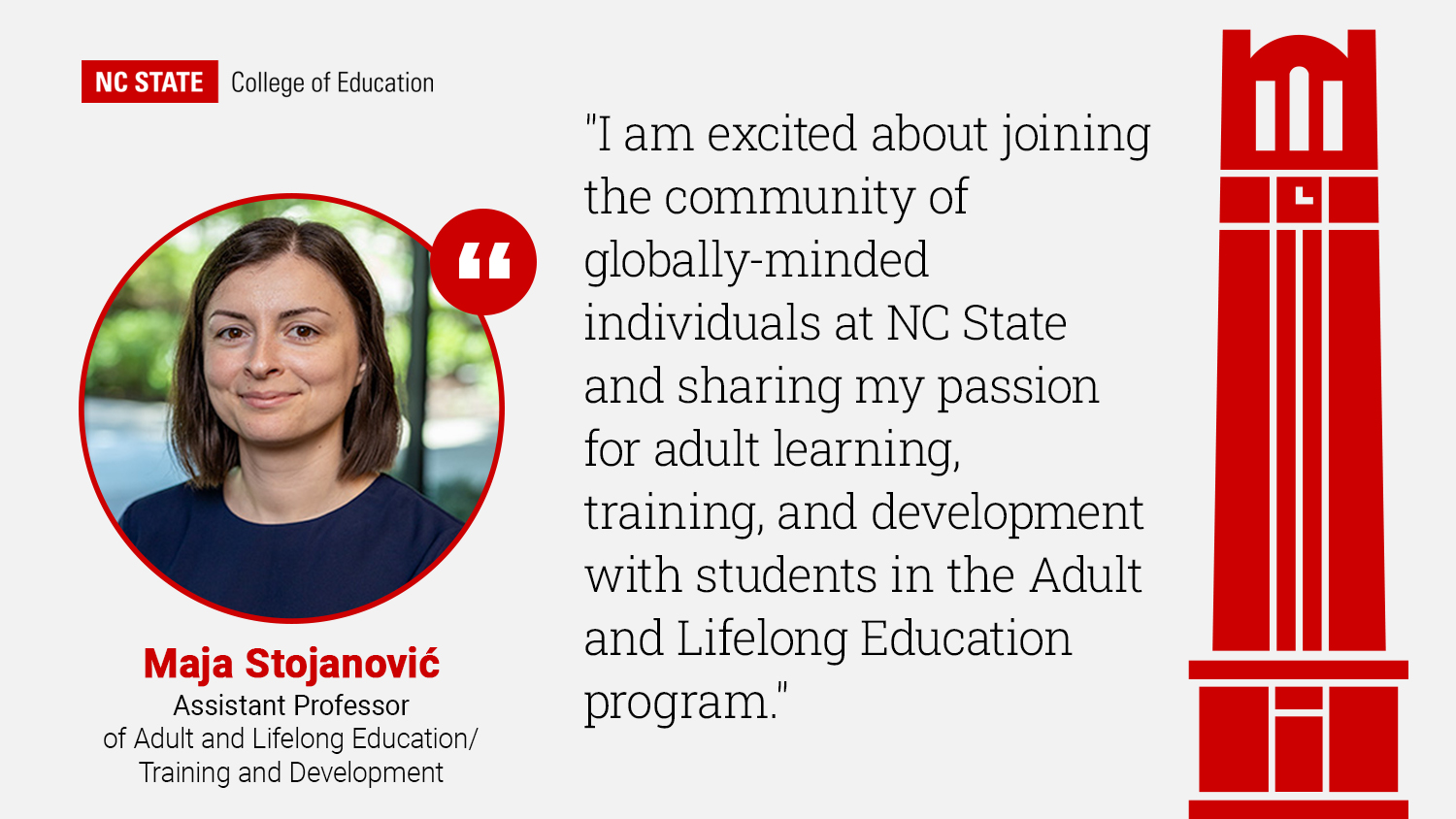Jonee Wilson, Temple Walkowiak to Measure High-Quality Instructional Practices to Support Marginalized Students in Rigorous Mathematics through NSF Grant

Jonee Wilson, Ph.D., assistant professor of mathematics education at the NC State College of Education, has focused on supporting marginalized students in mathematics classrooms for several years. Now, she is using an NSF grant to develop a way to measure the extent to which teachers implement practices that support African American and students learning English as a second language as they participate in rigorous mathematical activities.
The four-year, $2.3 million NSF grant funded project, “Validation of the Equity and Access Rubrics for Mathematics Instruction,” aims to create and validate a set of rubrics that parallel the Instructional Quality Assessment rubrics and assist researchers in determining the extent to which high-quality instructional practices are being used to support marginalized students.
The idea for the project stems from Wilson’s work as a research assistant on the Middle-School Mathematics and the Institutional Setting of Teaching (MIST) project, a multi-year longitudinal study of four large school districts across the United States. As researchers tracked student data over several years, they found that African American students in a small subset of classrooms were performing better than was predicted based upon their previous scores.
“We found only eight classrooms where a.) the teachers were supporting students in participating in the high-quality, ambitious, rigorous math andb.) the African American students were performing better than would be predicted, so we stopped and we said there’s something going on here worth digging into. If we outline the practices that appear to be making a difference, it may be a first step in helping teachers in better supporting their students,” she said.
Analysis of more than 2,000 hours of video showed that teachers in these eight classrooms were using seven common practices, including paying attention to both mathematical language and cultural dialect, making their expectations of students explicit and positioning students as competent.
“The rubrics that this [NSF] project is designed to validate came out of the work of examining the instructional practices being implemented in these eight classrooms,” Wilson said.
The rubrics in development will be based on the practices identified during the MIST project, as well as data from the Responsive Classroom Efficacy Study (RCES), on which project co-PI and College of Education Associate Professor Temple Walkowiak, Ph.D., worked when she was a doctoral student at the University of Virginia.
The RCES project utilized a randomized controlled design to examine the impact of a socio-emotional intervention on student achievement, teacher-student interactions and mathematics instruction at the elementary level.
“We will be able to leverage this existing data to fine tune the articulation of instructional practices that provide optimal support for students who have been historically marginalized in mathematics,” Walkowiak said.
Wilson believes one of the interesting things about combining data from the MIST and RCES projects to inform the rubrics is that it will confirm the extent to which the identified practices can be used across grade levels and while teaching various mathematical concepts.
“Our findings have potential to inform the forms of instructional practices that we advocate for in methods courses and have implications for designing professional development to support K-12 mathematics teachers,” she said.
The rubrics may also open the door for follow-up investigations that allow researchers to examine the relationships between supportive teacher practices and student attitudes, student achievement and teacher knowledge, Walkowiak said.
“If we can articulate in fine-grain detail these practices, then mathematics teacher educators can better provide support when they work with both pre-service and practicing teachers,” Walkowiak said. “The fine-grain details will provide the pragmatic information needed by practitioners to provide the highest quality learning opportunities for students in their classrooms who have been historically marginalized, which ultimately will impact all students.”
- Categories:


